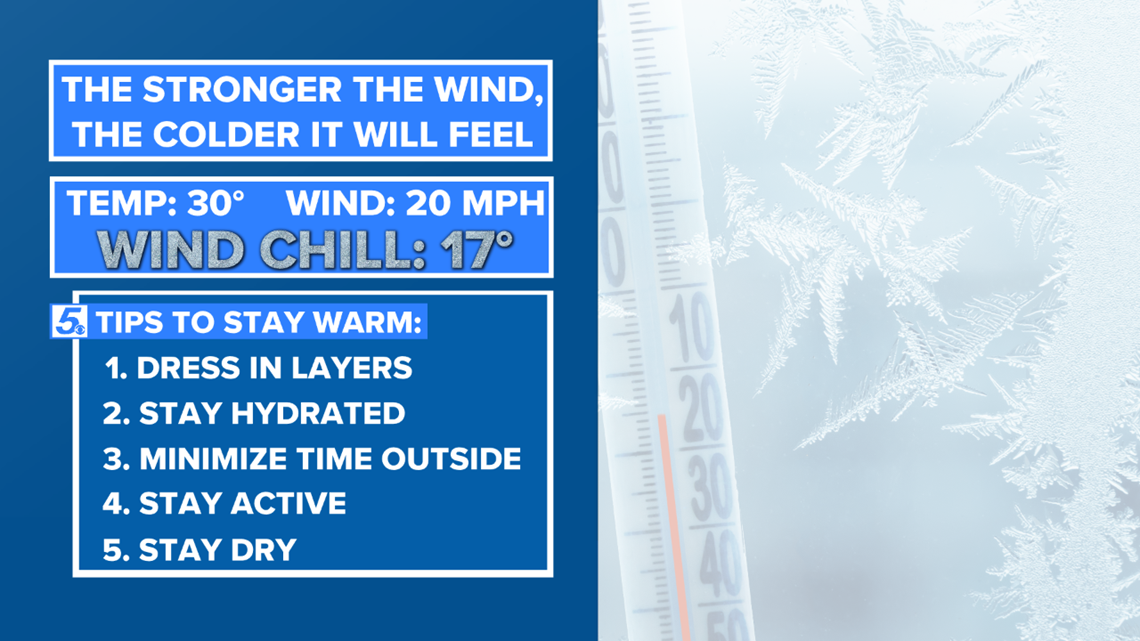SAN ANTONIO — In Texas, meteorologists use heat index during the summer months, then switch to wind chill during the colder months. Both heat index and wind chill are referred to as what it "feels like" to the human body, but they are different.
The heat index is when the temperature is combined with humidity.
Heat index chart:


Unlike heat index, wind chill factors in wind and temperature. The temperature must be 50 degrees or cooler and wind speed greater than 3 miles per hour.
Heat index and wind chill play an important role in health during weather extremes.
Our KENS 5 Weather Team refers to wind chill to show what it "feels like" on our skin.
The average temperature of the human body is 98.6 degrees. If there is no wind present our body will radiate heat, creating a thin layer of warmth above the skin.


On a windy day, the wind will strip away that warm layer making it feel much colder.


The stronger the wind, the colder it will feel outside.
For example, if the outside temperature is 30 degrees with a wind speed at 20 miles per hour, we will have a wind chill (a "feels like" temperature) of 17 degrees!
The National Weather Service has a helpful chart in determining wind chill.


You can determine the wind chill by finding the closet current temperature at the top and closest current wind speed on the side. Then follow where that column and row meet to get the current wind chill.
The blue and purple-shaded areas on the wind chill chart show the amount of time it would take to get frostbite.
A bitterly cold wind chill can increase your risk of getting hypothermia and frostbite.
Here are 5 tips to stay warm and safe:
- Dress in layers. Don't forget your hat, scarf, and gloves!
- Stay hydrated.
- Limit time outside.
- Stay active.
- Stay dry.


Don't forget to protect outdoor pets, plants, and pipes during the colder months!
Stay weather aware by following the KENS 5 Weather Team:

